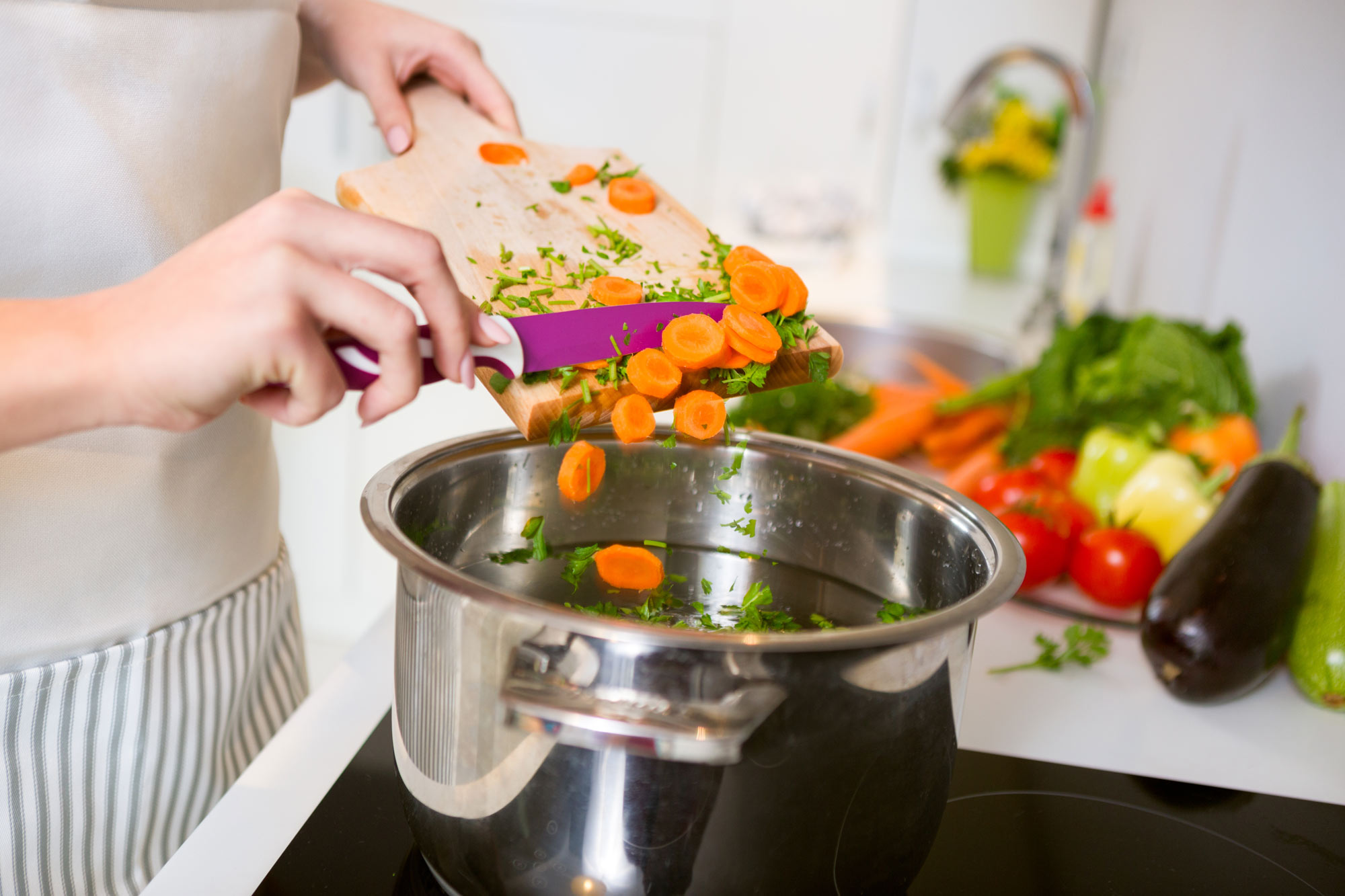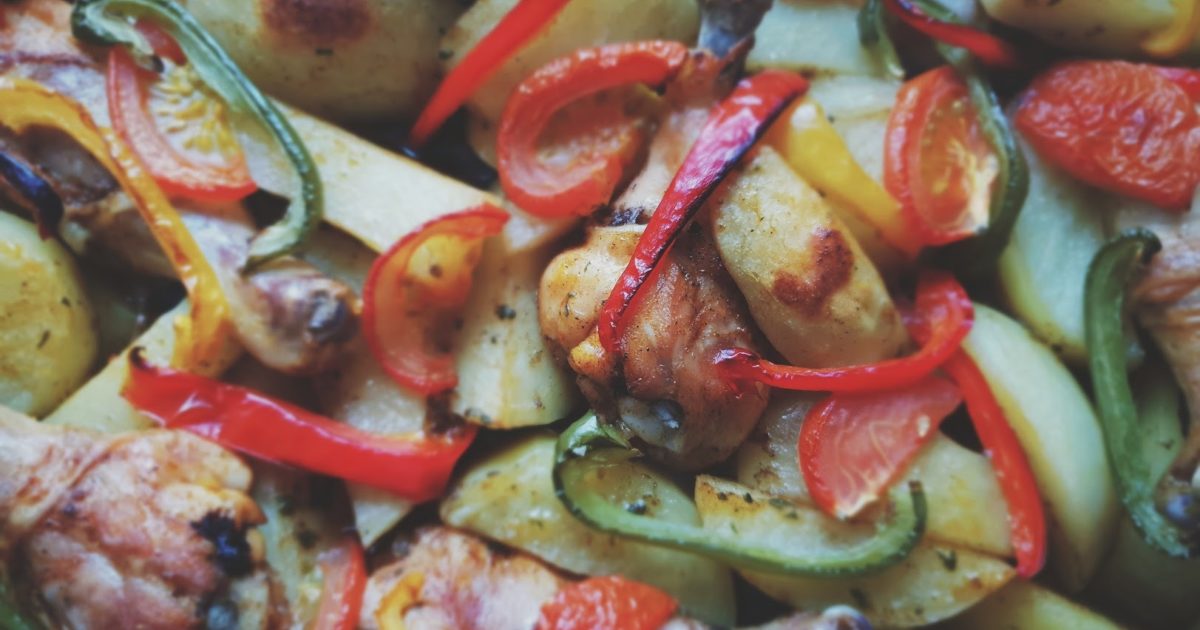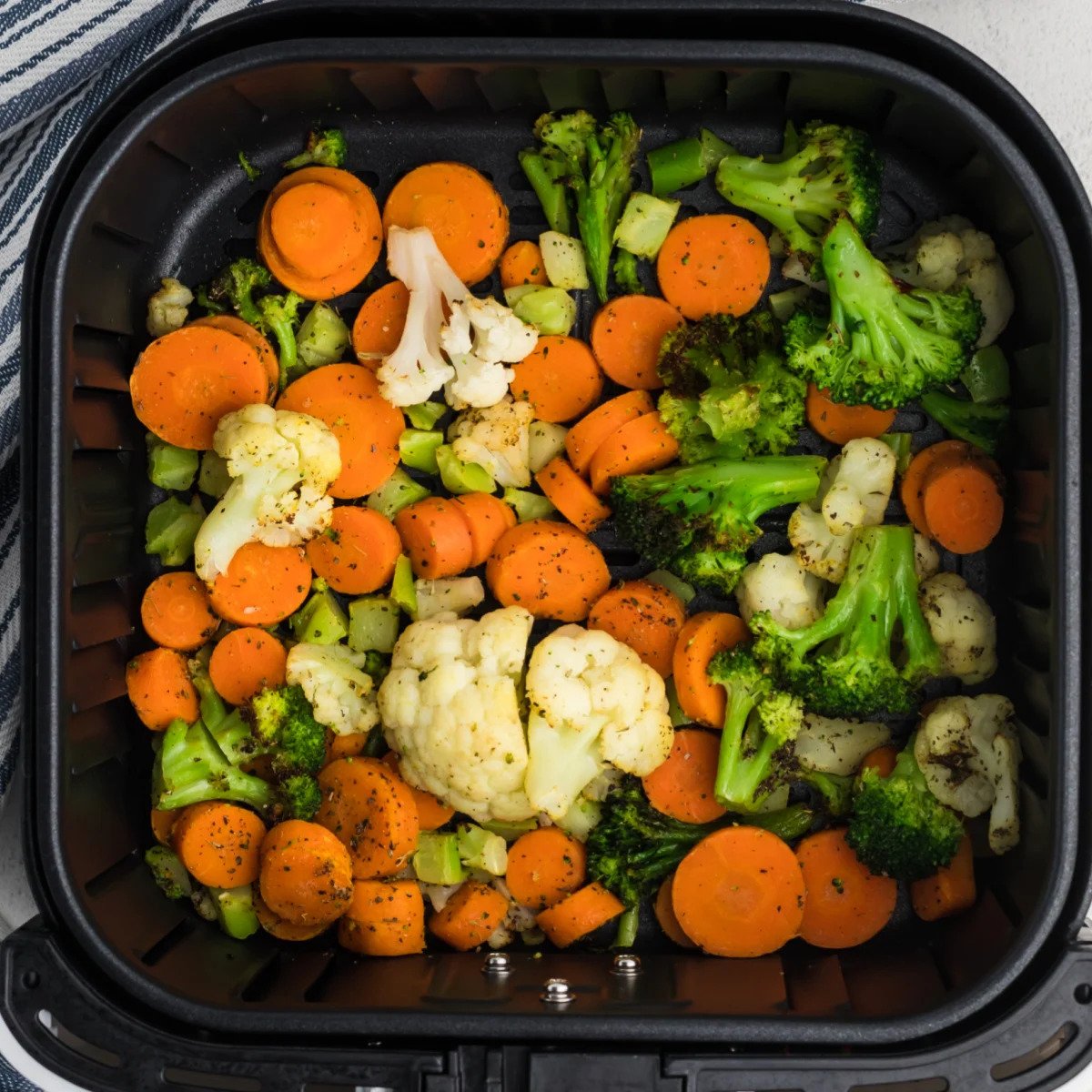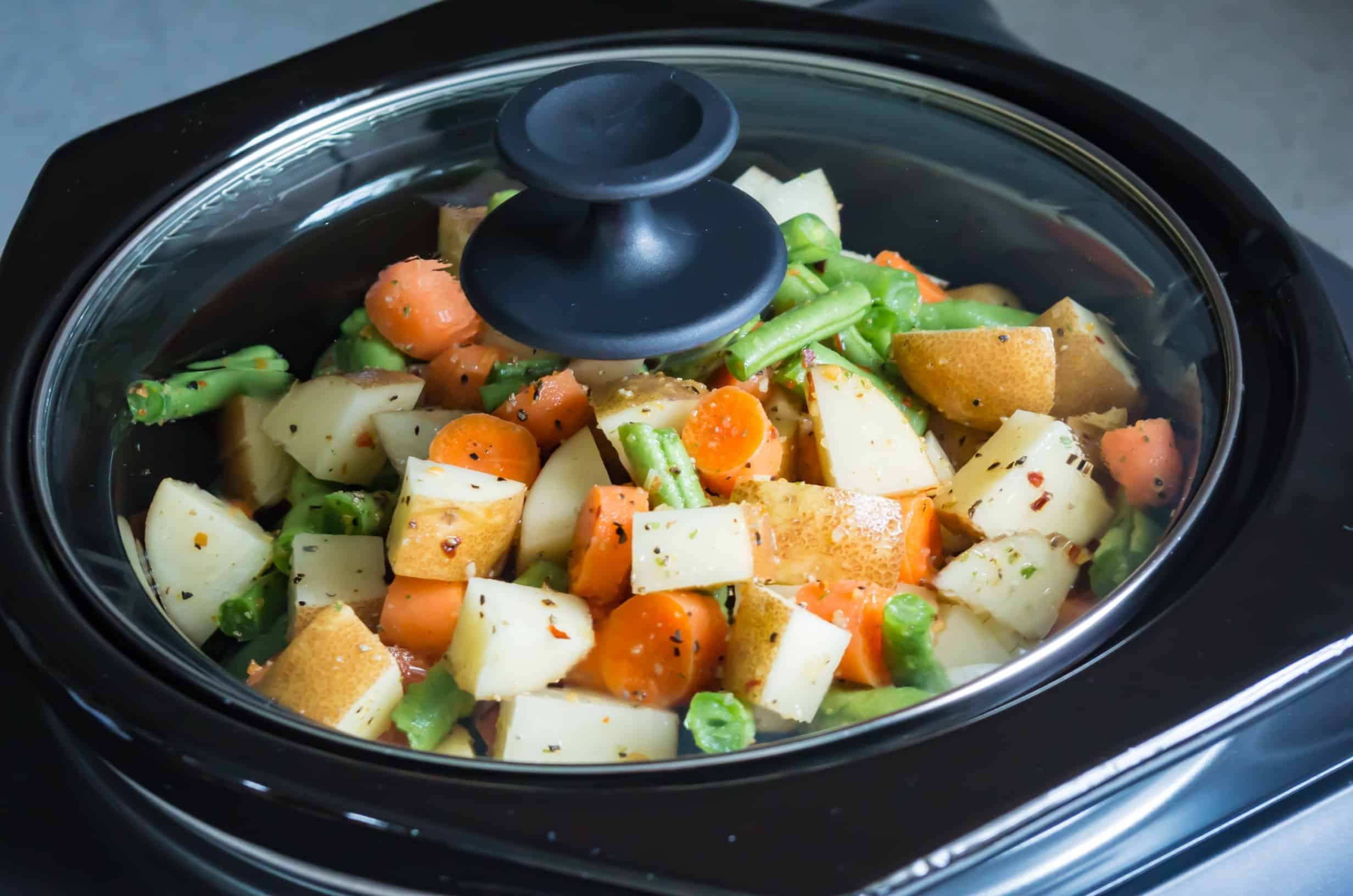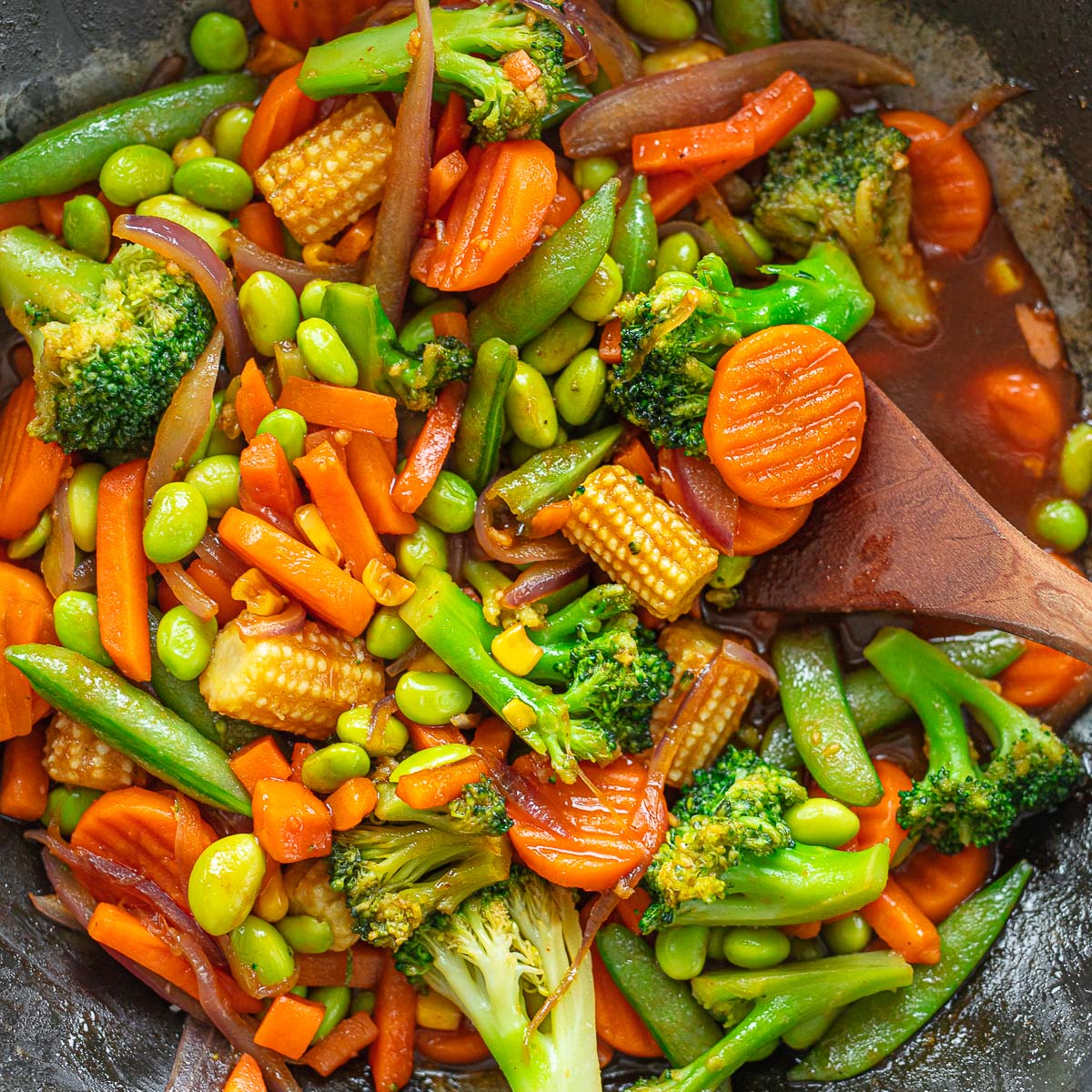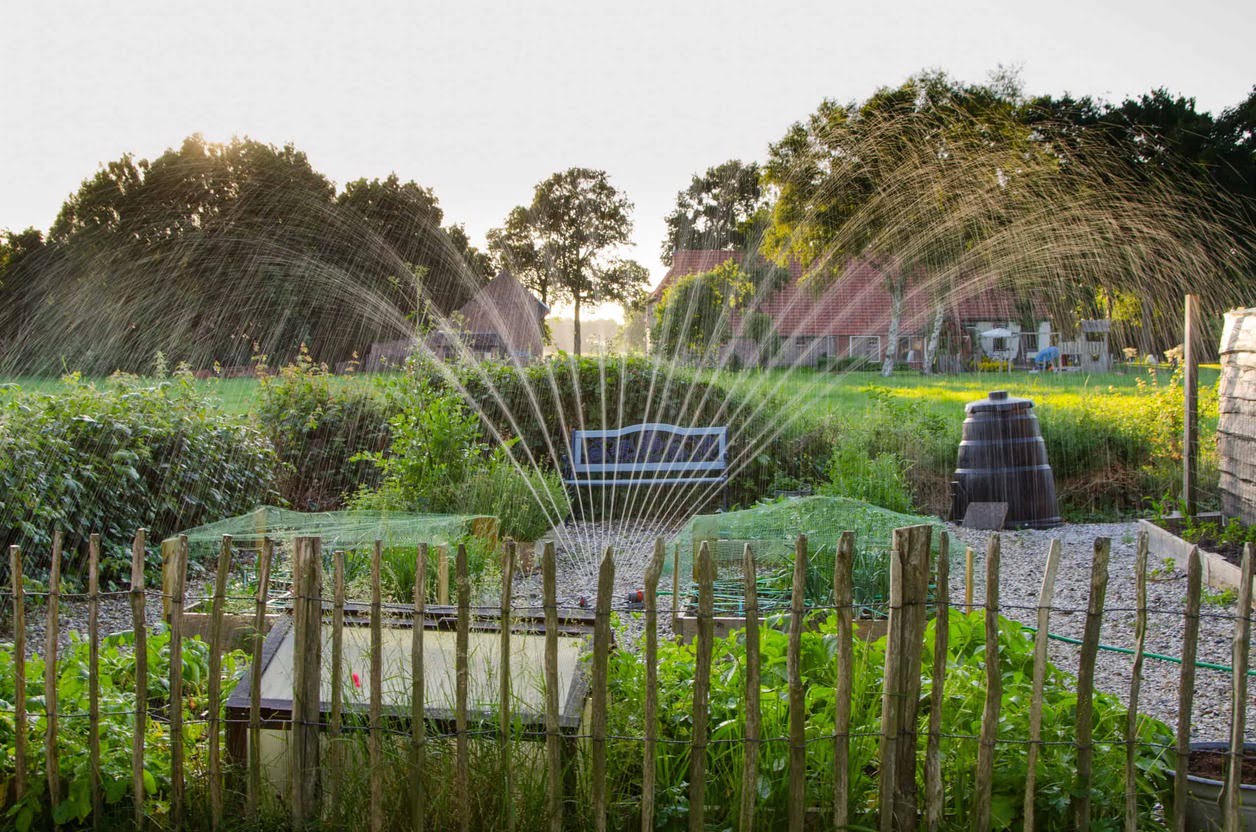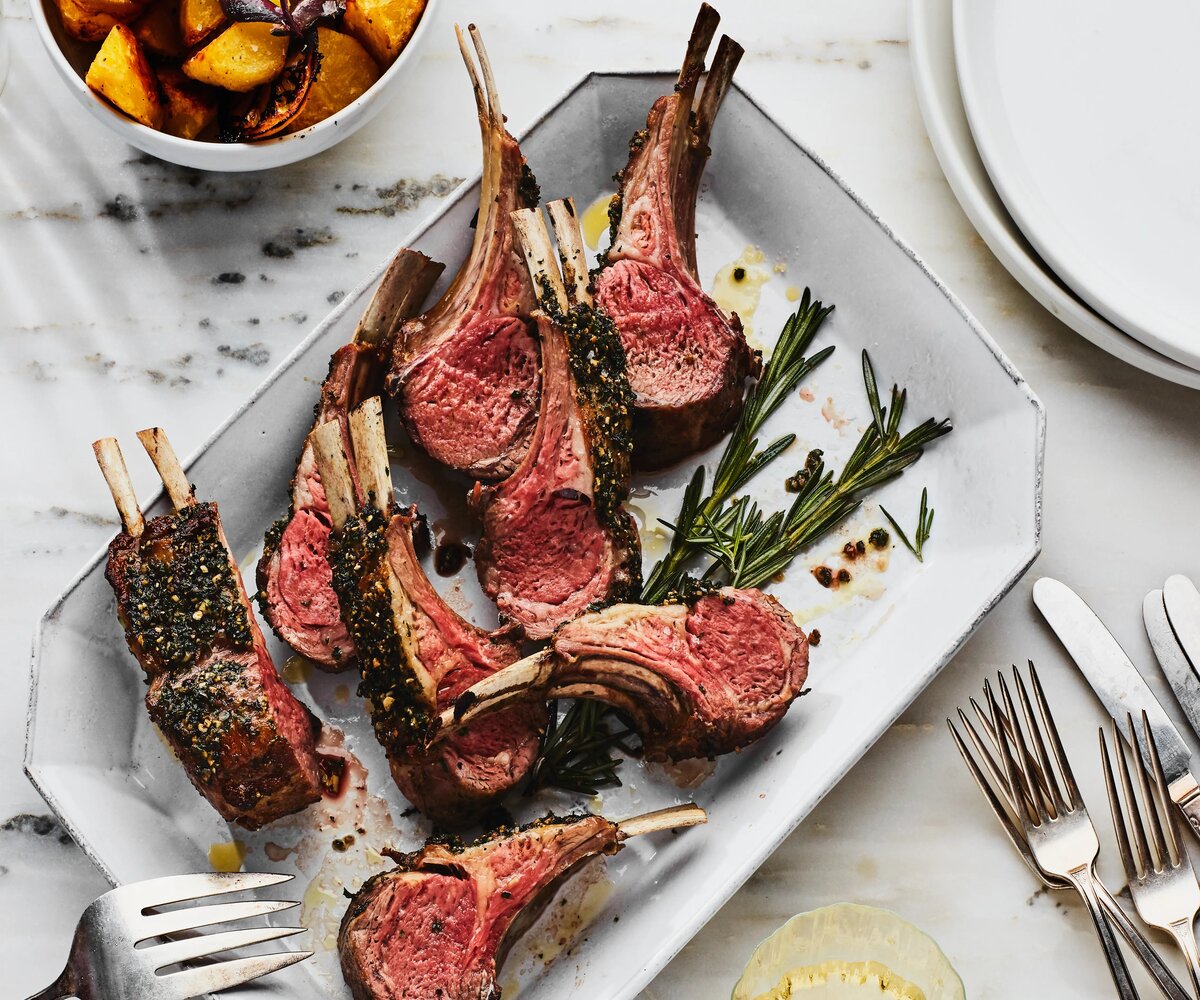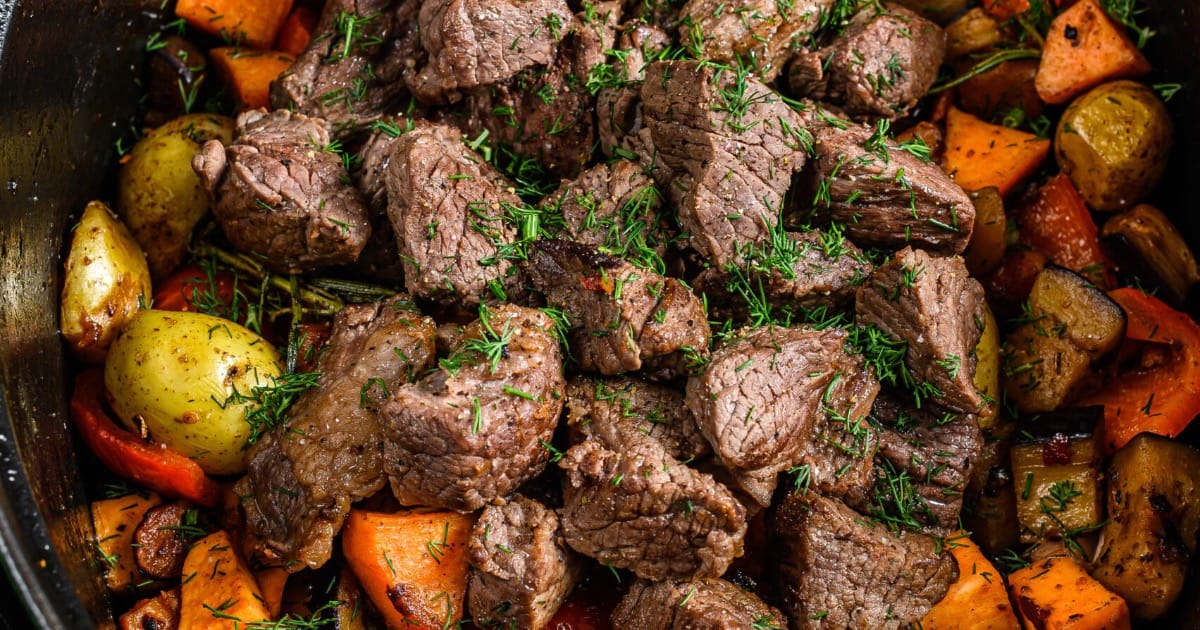Home>Gardening News and Trends>Latest News>What Is The Healthiest Way To Cook Vegetables
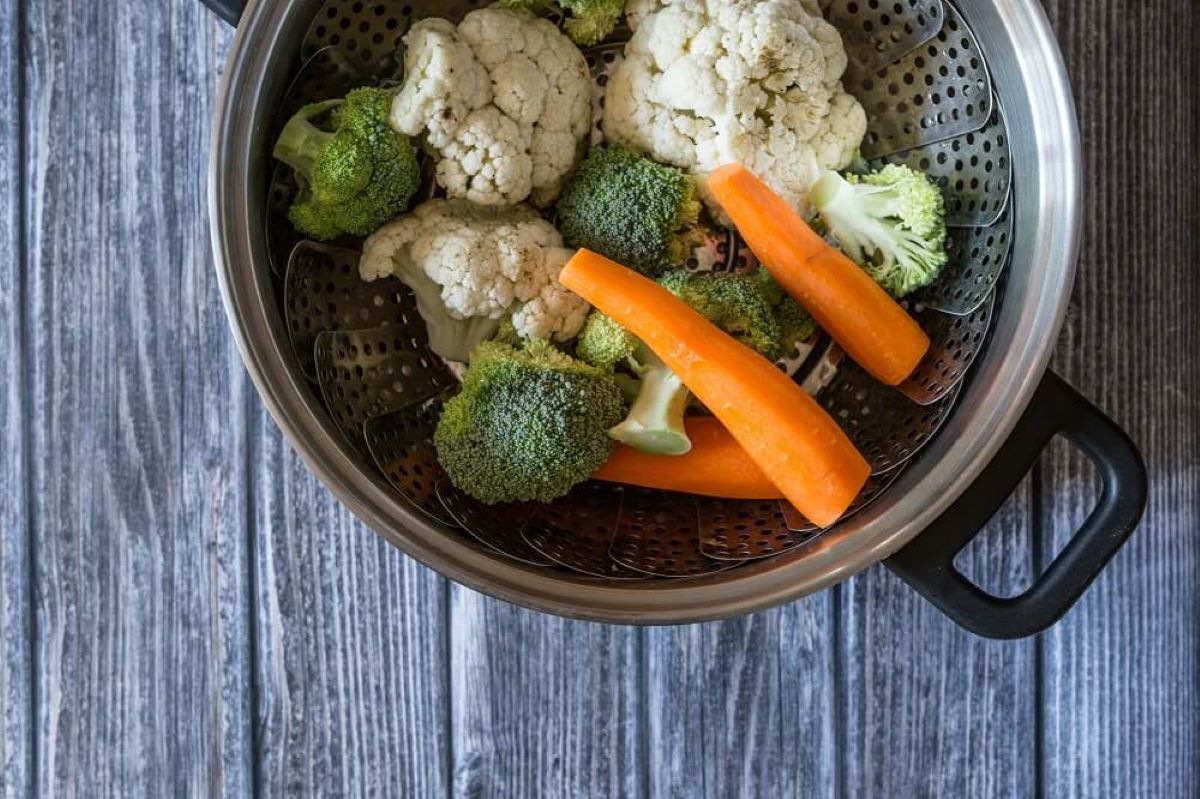

Latest News
What Is The Healthiest Way To Cook Vegetables
Modified: January 22, 2024
Discover the latest news on the healthiest way to cook vegetables. Find out the best techniques and cooking methods to preserve nutrients and maximize flavor.
(Many of the links in this article redirect to a specific reviewed product. Your purchase of these products through affiliate links helps to generate commission for Chicagolandgardening.com, at no extra cost. Learn more)
Introduction
When it comes to cooking vegetables, finding the healthiest cooking method is essential to preserve their nutrients and flavors. While raw vegetables offer undeniable health benefits, cooking them can make certain nutrients more accessible and enhance their taste. However, not all cooking methods are created equal. Some techniques can lead to nutrient loss or the addition of unhealthy fats and oils.
In this article, we will explore various cooking methods and identify the healthiest ways to cook vegetables. By choosing the right technique, you can retain the maximum amount of nutrients while creating delicious and nutritious dishes for you and your family.
It’s important to note that different vegetables have different cooking requirements based on their texture, density, and moisture content. Therefore, understanding the ideal cooking methods for specific vegetables can help you optimize their nutritional value and taste.
So, let’s dive into the world of cooking techniques and find out how to cook vegetables in the healthiest way possible.
Boiling
Boiling is a common cooking method for vegetables and involves submerging them in boiling water until they become tender. While boiling is relatively simple and convenient, it may lead to some nutrient loss, especially water-soluble vitamins like vitamin C and B vitamins. However, the degree of nutrient loss depends on factors such as cooking time and the volume of water used.
To minimize nutrient loss while boiling vegetables, consider the following tips:
- Use minimal water: Excessive water can leach out more nutrients from vegetables. Use just enough water to cover the vegetables.
- Reduce cooking time: Overcooking vegetables can result in further nutrient loss. To retain as many nutrients as possible, cook vegetables just until they are tender.
- Save the cooking water: The water used for boiling vegetables may contain some nutrients. Instead of discarding it, repurpose it as a base for soups or sauces to retain any nutrients that leached into the water.
While boiling may cause some nutrient loss, it can also have benefits. Boiling can help break down tough fibers in certain vegetables, making them easier to digest. It is also an excellent choice for preparing vegetables that are already high in nutrition, such as leafy greens and root vegetables.
Overall, boiling can be a healthy cooking method if done correctly. Remember to use minimal water, reduce cooking time, and make use of the cooking water whenever possible to retain as many nutrients as you can.
Steaming
Steaming is a gentle cooking method that preserves the natural flavors and nutrients of vegetables. This technique involves cooking vegetables with the heat of steam, either by using a steamer basket or a steaming pot.
Steaming is considered one of the healthiest ways to cook vegetables due to several reasons:
- Minimal nutrient loss: Steaming requires minimal contact with water, which helps to retain the nutritional value of vegetables. Unlike boiling, where water-soluble vitamins can leach into the water, steaming keeps the nutrients intact.
- Preserves colors and textures: Steaming allows vegetables to cook evenly without becoming mushy or losing their vibrant colors. This method helps retain the crispness and natural texture of the vegetables.
- No need for added fats: Steaming doesn’t require the use of additional oils or fats, making it a low-calorie cooking method. This can be beneficial for those watching their calorie intake or following a healthy diet.
- Enhances flavor: Steaming enhances the natural flavors of vegetables without adding any overpowering tastes. It allows the natural sweetness and subtle flavors of the vegetables to shine through.
To steam vegetables properly, follow these steps:
- Place a steamer basket or insert over boiling water.
- Add the vegetables to the basket and cover the pot with a lid.
- Steam the vegetables until they are tender but still slightly crisp.
- Remove the vegetables from the steamer and season them with herbs, spices, or a drizzle of olive oil, if desired.
Overall, steaming is a fantastic method to cook vegetables while maintaining their nutrients and flavors. It’s an excellent choice for delicate vegetables like broccoli, cauliflower, asparagus, and green beans.
Roasting
Roasting is a versatile cooking method that not only brings out the natural flavors of vegetables but also gives them a delicious caramelized and slightly crispy texture. This technique involves cooking vegetables at a high temperature in the oven with a drizzle of oil, salt, and spices.
Roasting vegetables offers several benefits:
- Enhanced flavor: The high temperature of roasting helps to caramelize the natural sugars in the vegetables, resulting in a rich and intense flavor. The roasting process enhances the sweetness and brings out the unique taste of each vegetable.
- Pleasant texture: Roasting gives vegetables a satisfying texture with a slightly crispy exterior and a tender interior. This contrast in textures enhances the overall eating experience.
- Retains nutrients: While some water-soluble vitamins may be lost during roasting, the dry heat helps to preserve other nutrients such as fiber and antioxidants. Plus, roasted vegetables can be a great source of the antioxidant compound called lycopene.
- Requires minimal oil: Compared to other cooking methods like frying, roasting requires less oil. You can achieve delicious results by using just a small amount of oil or opting for healthier alternatives like olive oil.
To roast vegetables effectively, follow these steps:
- Preheat your oven to the recommended temperature, typically around 400°F (200°C).
- Cut the vegetables into uniform sizes to ensure even cooking.
- Toss the vegetables with a drizzle of oil, salt, and any desired spices or herbs.
- Spread the vegetables out on a baking sheet in a single layer to promote even browning.
- Roast the vegetables in the preheated oven, turning them occasionally, until they are golden brown and tender.
- Remove the roasted vegetables from the oven and serve them as a side dish, in salads, or as a nutritious topping for grains or proteins.
Roasting is an excellent cooking method for a wide variety of vegetables, including root vegetables like carrots and parsnips, cruciferous vegetables like Brussels sprouts and cauliflower, and even leafy greens like kale.
Sautéing/Stir-frying
Sautéing and stir-frying are quick and flavorful cooking techniques that involve cooking vegetables in a small amount of oil over high heat. These methods are ideal for preparing vegetables that require minimal cooking time and need to retain their crispness and vibrant colors.
Here are the advantages of sautéing and stir-frying vegetables:
- Rapid cooking: Sautéing and stir-frying use high heat, allowing vegetables to cook quickly. This helps to preserve their nutrients and natural flavors.
- Retains texture and color: The short cooking time of these techniques helps vegetables maintain their crunchiness. This method also preserves the vibrant colors of the vegetables, making them visually appealing.
- Customizable flavors: Sautéing and stir-frying offer the opportunity to infuse vegetables with various flavors. You can add herbs, spices, sauces, or condiments to create a wide range of tasty dishes.
- Minimal oil usage: While a small amount of oil is typically used in sautéing and stir-frying, it is much less compared to deep-frying. By using healthier oils like olive oil or coconut oil sparingly, you can keep the dish light and nutritious.
To sauté or stir-fry vegetables effectively, follow these steps:
- Heat a small amount of oil in a skillet or wok over medium-high heat.
- Add the vegetables to the pan and cook them while stirring continuously to prevent burning or sticking.
- Cook the vegetables until they reach the desired level of doneness. Aim for crisp-tender vegetables for maximum flavor and nutritional value.
- Season the vegetables with your choice of spices, herbs, or sauces to enhance the taste.
- Remove the sautéed or stir-fried vegetables from the pan and serve them as a side dish or as a base for stir-fry dishes with proteins or grains.
Sautéing and stir-frying are perfect for a variety of vegetables, including bell peppers, broccoli, snap peas, mushrooms, and zucchini. The quick cooking time and ability to customize flavors make these methods a favorite among many home cooks.
Grilling
Grilling vegetables is a flavorful and healthy cooking method that adds a smoky char and enhances the natural flavors of the vegetables. Whether using a traditional grill or a grill pan, this technique is perfect for creating delicious vegetable dishes with a unique and enticing taste.
Here are the benefits of grilling vegetables:
- Enhanced flavor: Grilling imparts a smoky and charred taste to vegetables that adds depth and complexity to their flavors. The natural sugars in vegetables caramelize, creating a slightly sweet and savory combination.
- Retains nutrients: Grilling requires minimal cooking time, which helps to retain the nutritional value of vegetables. This method preserves the vitamins, minerals, and antioxidants present in the vegetables.
- Versatility: Grilling allows you to cook a wide variety of vegetables, from sturdy options like eggplant and peppers to delicate options like asparagus and zucchini. You can mix and match vegetables to create a colorful and tasty grilled vegetable medley.
- Minimal oil usage: Grilling vegetables typically requires only a small amount of oil to prevent sticking. This makes it a healthier option compared to frying or sautéing.
To grill vegetables effectively, follow these steps:
- Preheat your grill or grill pan to medium-high heat.
- Prepare the vegetables by cutting them into appropriate sizes and brushing them lightly with oil.
- Place the vegetables directly on the grill grates or in a grill pan and cook them until grill marks appear, usually around 5-10 minutes, depending on the vegetable and desired doneness.
- Flip the vegetables occasionally to ensure even cooking and prevent burning.
- Once the vegetables are tender and have a nice char, remove them from the grill and season with salt, pepper, herbs, or spices.
- Serve the grilled vegetables as a side dish, in salads, or as a delicious addition to sandwiches or wraps.
Grilling vegetables is a fantastic way to enjoy their natural flavors while adding a touch of smokiness. It’s perfect for outdoor barbecues or when you want to create a unique and delicious vegetable dish.
Conclusion
When it comes to cooking vegetables, choosing the right cooking method is crucial to preserve their nutrients and flavors. Each cooking technique has its own advantages and considerations, but some methods are generally considered healthier than others.
Steaming and roasting are two of the healthiest ways to cook vegetables. Steaming ensures minimal nutrient loss and preserves colors, textures, and flavors. It requires no added fats and is suitable for a wide range of vegetables. On the other hand, roasting enhances the natural flavors of vegetables and creates a delightful caramelized texture. While it may cause some nutrient loss, it retains fiber and antioxidants.
Sautéing and stir-frying are quick and customizable methods that require minimal oil. They allow for rapid cooking, which helps retain the crunchiness and vibrant colors of the vegetables. Grilling adds a smoky char and enhances the natural flavors of vegetables. It requires minimal oil and imparts a unique taste to the vegetables.
It’s important to note that the healthiness of a cooking method can also depend on the types and quantities of ingredients used. For example, using excessive oil or adding high-calorie sauces can negate the health benefits of a cooking technique.
Incorporating a variety of cooking methods into your meal preparation can provide a diverse range of flavors, textures, and nutrient profiles. Consider experimenting with different techniques to keep your vegetable dishes interesting and enjoyable.
Ultimately, the healthiest way to cook vegetables depends on your preferences, nutritional needs, and the specific vegetables being cooked. By choosing cooking methods that preserve nutrients, retain flavors, and offer a pleasant eating experience, you can enjoy the benefits of both taste and nutrition in your vegetable dishes.
